How To Upgrade Iphone 6 Plus Storage
iPhone 13 — should you upgrade from iPhone 11, iPhone XS, iPhone 8 and more
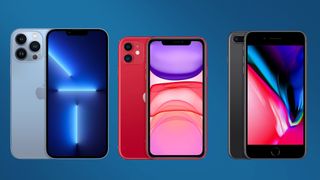
Some 10 days after the iPhone 13 made its long-anticipated appearance, all four models of the new phone are now available to buy via one of the best iPhone 13 deals.
As with last year, you're not hurting for choice when it comes to picking out a new iPhone 13, as Apple offers four models — the iPhone 13 mini, iPhone 13 Pro and iPhone 13 Pro Max join the standard iPhone 13 in this year's lineup.
But just as important as which iPhone you should buy is another burning question: is now the right time to upgrade to an iPhone 13? After all, people are holding onto their phones for a longer stretch of time, eager to squeeze every last bit of value from that device they spent so much on to acquire. With a starting price of $699 for the iPhone 13 mini and costs climbing to $1,099 for the iPhone 13 Pro Max, deciding whether it's time to dole out all that money for a new handset is a crucial part of the upgrade process.
- iPhone 14: 7 biggest upgrades we want to see
- Best iPhone 13 deals — save on your new device
- Plus: iPhone 13 or iPhone 13 Pro? Here's why you don't need to go Pro
Having reviewed all the new iPhone models, we can say for certain that they are Apple's best crop of iPhones yet. However that doesn't necessarily mean they're worth you upgrading from your current faithful iPhone.
Here's a breakdown of whether to upgrade to the iPhone 13 from any older model released over the last four years. In addition to the features you'd gain from an upgrade, we'll also give you an idea of how much trade-in value your current phone will command.
Should you upgrade to the iPhone 13 from the iPhone 12?

Like the iPhone 13, the iPhone 12 comes in four models, with each model the exact same size as its successor. In fact, the prices on the four new iPhone 13 models mirror those of the iPhone 12 mini, iPhone 12, iPhone 12 Pro and iPhone 12 Pro Max back when they debuted. So what exactly is the reason to upgrade less than a year after those four phones launched?
What you get by upgrading: Opt for any iPhone 13 model over the iPhone 12, and you'll immediately see a pretty powerful processor, as the new phones feature Apple's A15 Bionic chipset. Our testing shows the new processor outperforming the iPhone 12 — and all other smartphone competition — on the Geekbench 5 test, and Apple has promised a 50% boost in graphics performance over the competition. The GPU on the iPhone 13 Pro models sports an extra core — five cores to the iPhone 13's four — so an upgrade should definitely deliver a performance boost on graphically-intense apps.
A bigger change has come with the battery sizes in the iPhone 13. Apple has increased their capacity for all iPhone 13 models, although the difference is more significant on the larger handset sizes. Considering how we were disappointed with iPhone 12 battery life — the iPhone 12 Pro Max excluded — that's a big move. As a result, we saw the iPhone 13 series phones last between one to three hours longer than their iPhone 12 counterparts.
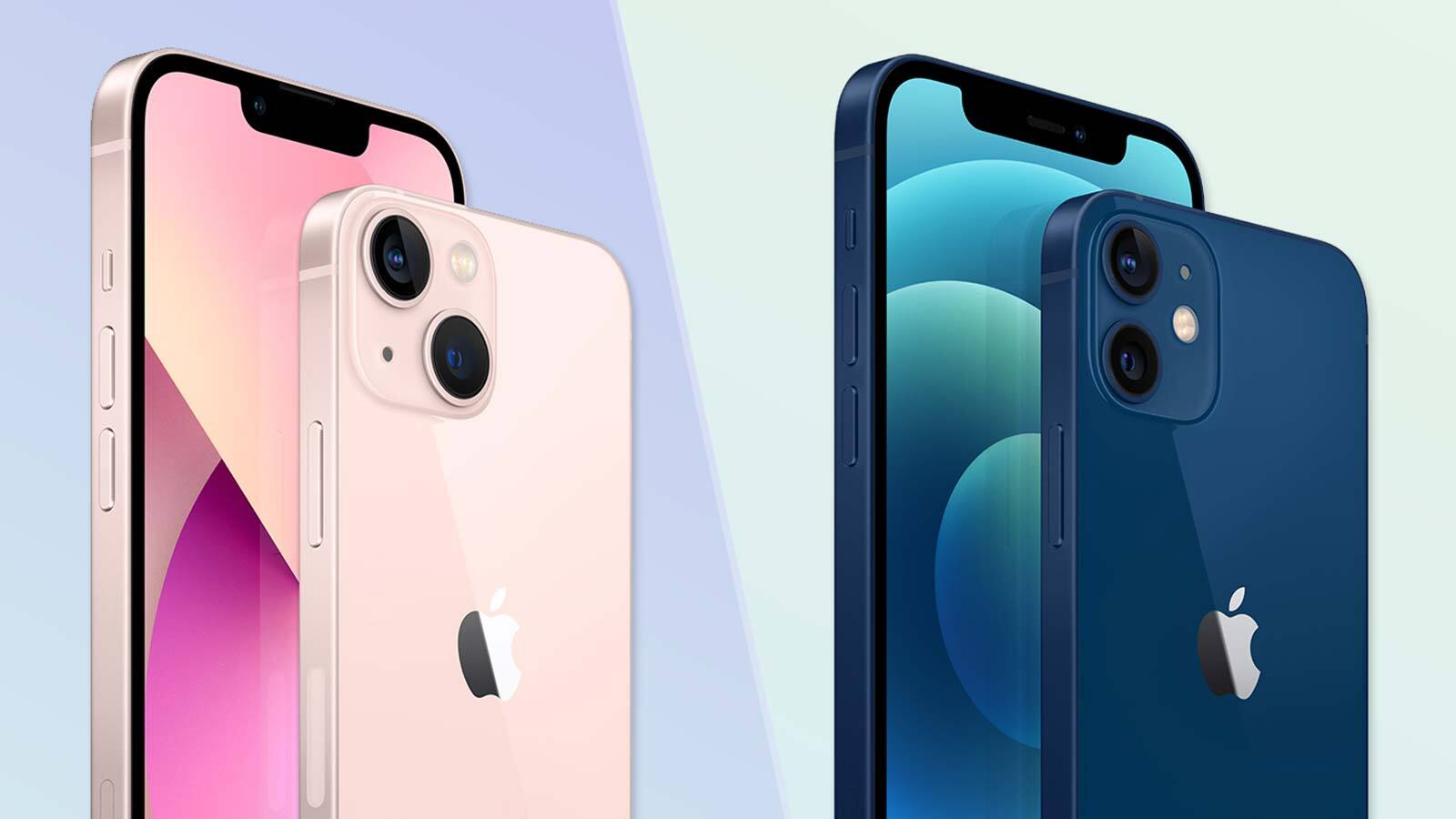
All of the iPhone 13 models also promise better photos than their iPhone 12 counterparts, as Apple is using larger sensors to let in more light. The sensor on the iPhone 13's main lens lets in 47% more light, for example, while the iPhone 13 Pro models sport an ultrawide angle lens with a wider aperture than before. Optical zoom is more powerful on the new Pro models too, with a 3x zoom on both the iPhone 13 Pro and Pro Max.
iPhone 13 displays are brighter than what you got with the iPhone 12, but the real leap happens if you upgrade to the iPhone 13 Pro models. Those two phones feature ProMotion displays, so they'll be able to adjust between 10Hz and 120Hz depending upon your on-screen activity. All other iPhones are locked at 60Hz.
Our iPhone 13 vs. iPhone 12 comparison details all the changes between last year's phones and the new models.
Current iPhone 12 trade-in values from Apple: You can see the biggest return when you trade in Apple's newest phones, as you might expect. When buying an iPhone 13, an iPhone 12 Pro Max could get you up to $790 — essentially getting you the phone for free. The credits on the iPhone 12 Pro (up to $640), iPhone 12 (up to $530) and iPhone 12 mini (up to $400) are also fairly generous.
Verdict: For a year-to-year jump, the iPhone 13 models do boast some fairly significant changes over the iPhone 12. That said, the iPhone 12 remains a powerful phone in its own right, so unless you're on a yearly upgrade plan such as Apple's iPhone Upgrade Program or you simply must have the latest iPhone in your pocket at all times, we'd recommend staying put.
Should you upgrade to the iPhone 13 from the iPhone SE (2020)?
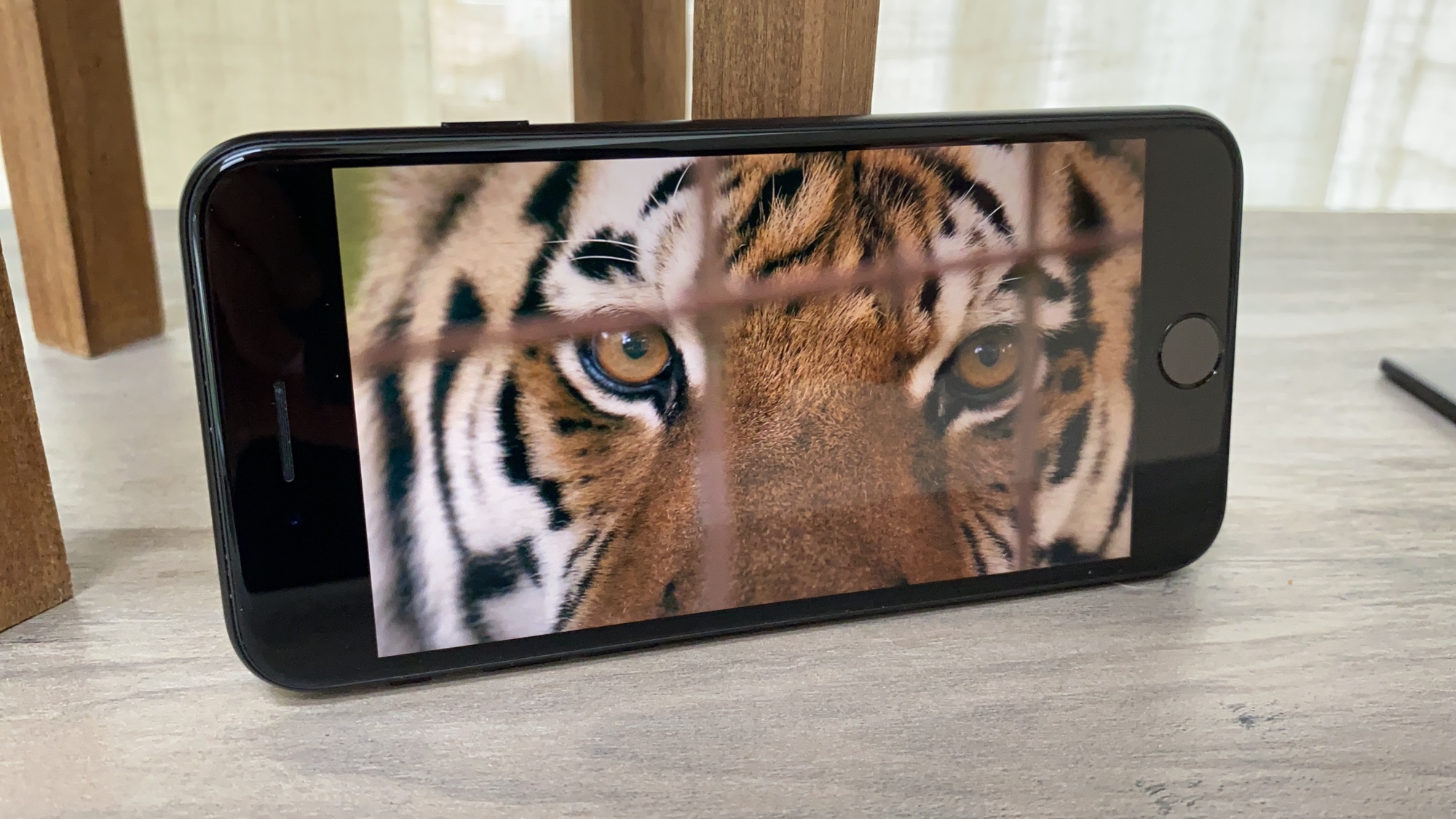
The iPhone 12 wasn't the only iPhone to come out in 2020. Apple also revived its iPhone SE model with a new version that brought the processor up to date and added improved camera hardware and software over the original iPhone SE.
What you get by upgrading: While the iPhone SE (2020) features the same chipset as the iPhone 11, we've since seen two generations of Apple A chips coming out. So expect a performance boost from the A15 Bionic. If you're considering a jump to the iPhone 13 or iPhone 13 mini, specifically, you'll get more storage, as those devices now start at 128GB versus the 64GB entry-level option on the iPhone 12 models.
The iPhone SE is unique in that it's the only phone in Apple's current lineup to feature a single rear lens. So any upgrade would give you greater flexibility, and that's before accounting for the larger sensors and wider apertures. While the iPhone 13 update focuses on low-light photography improvements, the iPhone SE continues to lack Night Mode support for photos in the dark.
Most significantly, the iPhone SE doesn't work with 5G networks. With the iPhone SE 3 not expected until next year at the earliest, the iPhone 13 is your latest chance to upgrade to a phone that works with the state-of-the-art network.
Current iPhone SE trade-in values from Apple: If you're upgrading from an iPhone SE, chances are you like small phones. That means the iPhone 13 mini is probably the one on your radar, since its 5.4-inch screen is the most compact in the iPhone 13 lineup. The mini also happens to have a smaller form factor than the bezel-heavy iPhone SE.
Assuming your iPhone SE is in good condition, you can expect up to $170 back from Apple on your iPhone 13 mini purchase. That's a pretty weak return, given that larger and older iPhones both command a higher value from Apple.
Verdict: The iPhone 13 mini looks to be a solid upgrade over the iPhone SE with more storage, a better processor, and a second rear lens that figures to perform better in low-light. That would get us to upgrade normally, but if you're committed to the iPhone SE brand and can wait, we could see a new 5G-ready version within the first three months of 2022.
Should you upgrade to the iPhone 13 from the iPhone 11?

Two years used to be when people would consider upgrading to a new phone, but that was back in the days when wireless carriers subsidized your handset's cost. People wait longer to upgrade now that they're paying for the full cost of a phone, so owners of the iPhone 11, iPhone 11 Pro and iPhone 11 Pro Max may not be as eager to jump to the iPhone 13 as they would have been a half-decade ago. Still, there are compelling reasons to upgrade from these two-year-old devices.
What you get by upgrading: The jump from the iPhone 11 lineup to the iPhone 12 was fairly significant, so if you've still got a 2019-era iPhone in your pocket, an upgrade to an iPhone 13 will be a significant one.
You get the performance boost from jumping all the way from an A13 Bionic processor to the A15, for starters. And not only will you enjoy fast refreshing screens should you opt for one of the iPhone 13 Pro models, you'll also have more screen space to work with. The iPhone 11 Pro Max only featured 6.5 inches of screen space — less than the iPhone 13 Pro Max. But that's downright roomy compared to the iPhone 11 Pro and its 5.8-inch screen. In those days Pro models also started out with 64GB of storage.
The screen jump will be even bigger if you've got an iPhone 11, though not because of size. (That model was also 6.1 inches.) Instead, the iPhone 11 was still using an LCD panel for its screen; the past two years have seen a full switch to OLED technology.
iPhones are more durable these days, too, than they were back in the iPhone 11's time. While phones from that year offered water resistance, they were capped at either 2 meters for the iPhone 11 or 4 meters for the iPhone 11 Pro models; the iPhone 13 models can withstand a dunk up to 6 meters. And like last year's iPhone 12, the iPhone 13 models offer Ceramic Shield displays to reduce the chances of damage. That feature's missing from the iPhone 11 lineup.
Battery life on all three iPhone 11 models was good to great, so you may not notice as much of a boost in that department should you upgrade. (Though after two years of use, your iPhone 11 model may not hold a charge as well as it used to.) Still, the camera improvements Apple's introduced over the last two years should make for some significantly better shots, particularly if you're mulling over a jump to the iPhone 13 Pro.
Of course, we haven't mentioned one of the bigger differences between the iPhone 11 lineup and iPhones of a more recent vintage. The iPhone 11 can only connect to LTE, while the iPhone 13 family is the second generation of phones to work with 5G — and not just some 5G, but an extensive collection of bands and networks.
You can read our iPhone 13 vs. iPhone 11 comparison for more on how the phones differ.
Current iPhone 11 trade-in values from Apple: An iPhone 11 Pro Max nets the biggest trade-in return when you buy a new iPhone 13 — up to $500 at Apple. The iPhone 11 Pro gets you up to $450 back while an iPhone nets you a $340 credit.
Verdict: You could probably squeeze another year's worth of decent service out of your iPhone 11 model, especially if you're not particularly eager to make the move to 5G. However, the better screens and cameras on the newer iPhones — particularly the iPhone 13 Pro models — would be more than enough to justify the costs of upgrading, especially if you can knock down those costs with a trade-in.
Should you upgrade to the iPhone 13 from the iPhone XR and iPhone XS?
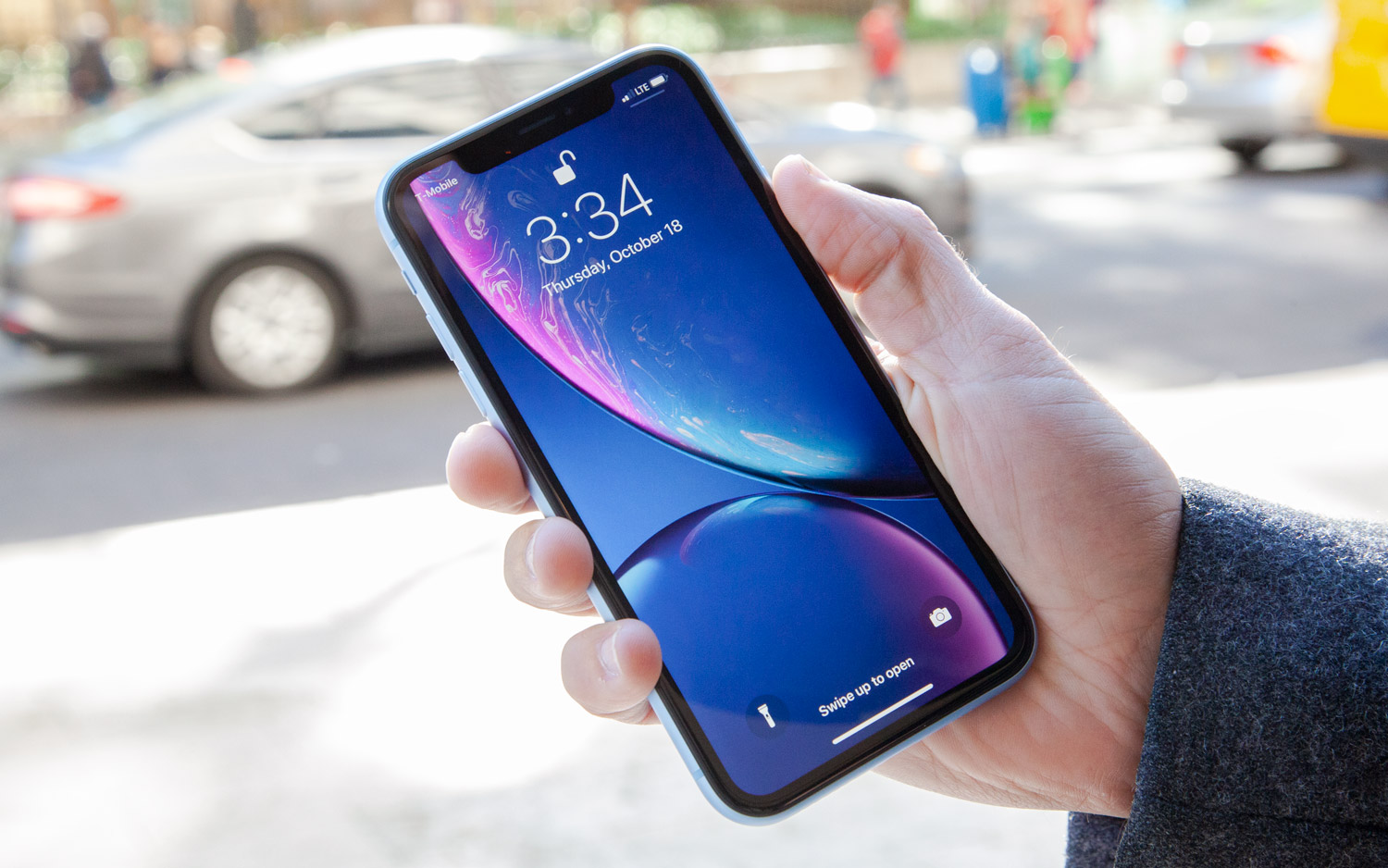
Cast your mind back to 2018 — an era when Apple still produced single-lens flagship phones, and Smart HDR was the big innovation for Apple's photo software. This was back before there was even an official Pro lineup with Apple using the letters S and R to distinguish between its different iPhone X successors.
What you get by upgrading: The iPhone XR, iPhone XS and iPhone XS Max use an older A12 Bionic chip, and the advances Apple's made in the past three years should lead to a definite improvement in performance. Camera performance will be better, too, largely because there's no ultrawide angle lens on the iPhone XS and XS Max and just a single camera on the back of the iPhone XR. Forget about low-light shots — Night Mode wouldn't arrive until the iPhone 11 lineup.
Upgrading your phone will likely mean a boost in storage, as this was squarely in Apple's "64GB Is Plenty" era. Both the iPhone XS Max and iPhone 11 offered great battery life at the time, but we imagine the bigger batteries on the iPhone 13 will impress — particularly if these older phones are starting to show their age.
Current iPhone XR and XS trade-in values from Apple: At this point, the trade-in values are starting to dwindle, but iPhone XS Max can still fetch up to $320 from Apple on a trade-in. The values for the iPhone XS (up to $240) and iPhone XR (up to $230) aren't all that different.
Verdict: We've reached the point where an upgrade to the iPhone 13 would make sense for all but the most frugal of users. Every part of the iPhone experience will be better when you jump ahead to three years of hardware and software improvements. That said, this is the last generation of phones that can support nearly every iOS 15 feature, so if you want to hold out just a bit longer before upgrading, no one's going to stop you.
Should you upgrade to the iPhone 13 from the iPhone X?
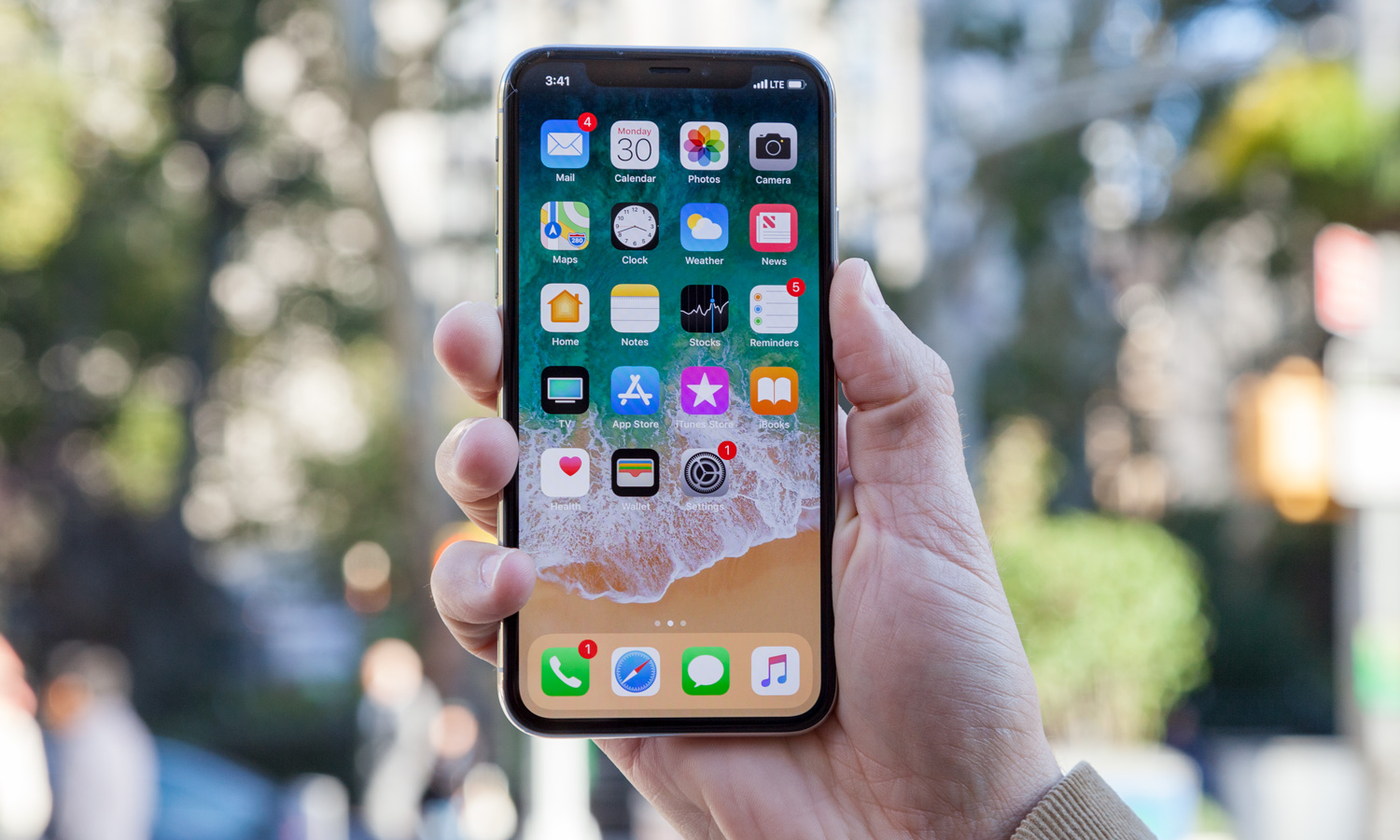
It's the iPhone that launched Apple's current phone design four years ago, even if Apple moved to straighter edges with last year's iPhone 12. But apart from that shift in design, what else has changed since the days of the iPhone X?
What you get by upgrading: The first iPhone to flirt with a $1,000 price tag is also the first Apple device to feature a notch on its screen. That notch has stayed the same size over the years, even as Apple tried out different sized displays. The iPhone 13 features a notch that's 20% smaller than its predecessor, so iPhone X upgraders will definitely notice the extra screen real estate, beyond just the switch from a 5.8-inch OLED screen.
The A11 Bionic processor was a powerhouse in its day, but it doesn't have enough oomph to handle some of the features Apple's introducing in iOS 15, which comes pre-installed on the iPhone 13. (Here's a full list of the iOS 15 features that require an A12 Bionic or later.) That alone should push you to upgrade, beyond the better cameras, improved battery life, extra storage and nicer displays that each of the four iPhone 13 models have to offer.
Current iPhone X trade-in values from Apple: Expect up to a $200 discount on your iPhone 13 purchase at Apple when you trade in an iPhone X in top condition.
Verdict: The iPhone X was a trendsetter at the time, but Apple has moved forward and so should you, if only to experience all the features in iOS 15.
Should you upgrade to the iPhone 13 from the iPhone 8?
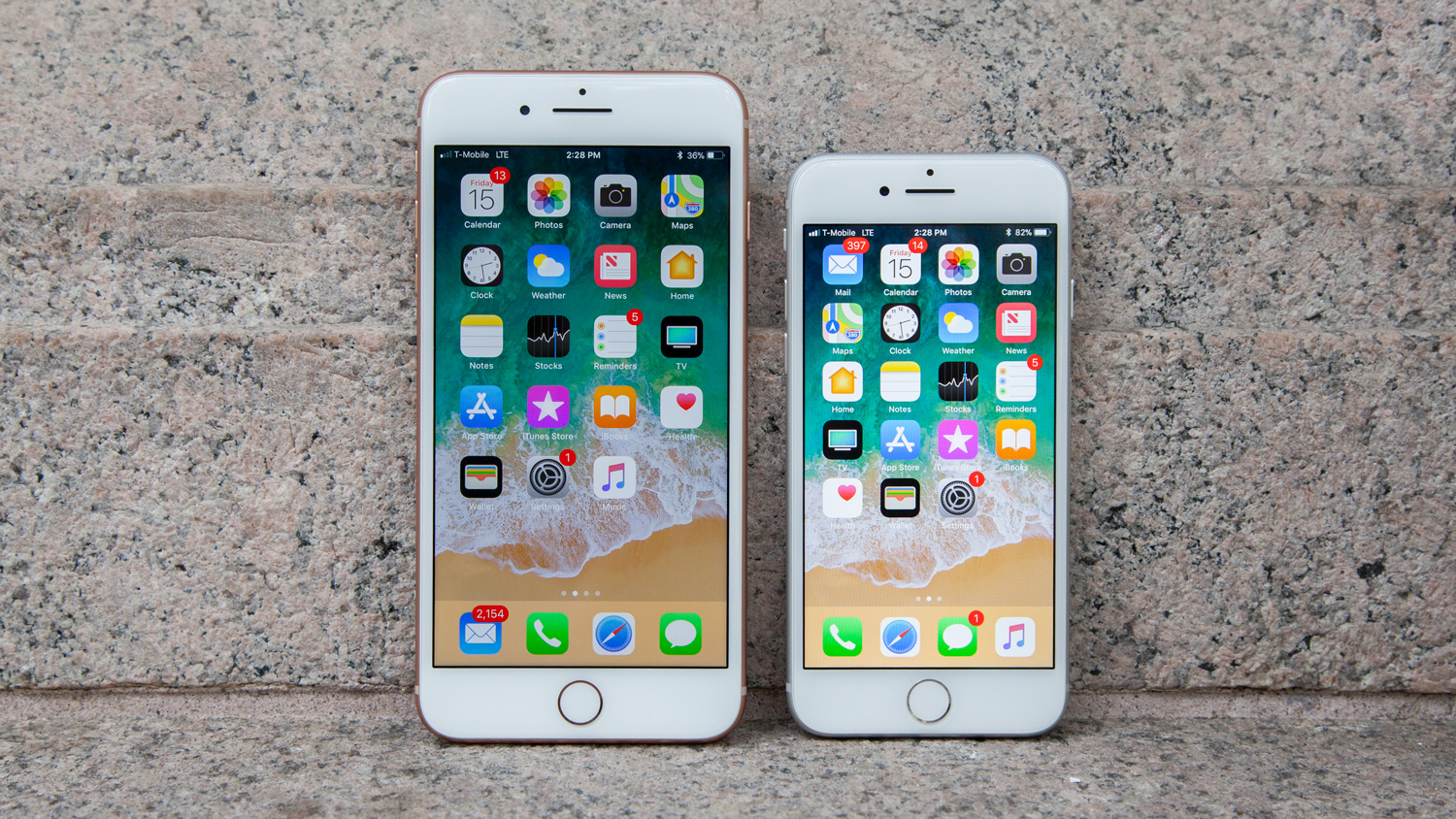
The same year that Apple switched gears to the iPhone X template, it rolled out the last two phones to feature sizable bezels at the top and bottom of its displays. (The exception being the iPhone SE, which offers a throwback to the iPhone 8's design.) Is it time to move on from the iPhone 8 and iPhone 8 Plus? Well, yes. But here's why.
What you get by upgrading: Imagine no longer having chunky bezels at the top of your phone. Well, you could have imagined that at any point in the last four years. But now, you can get serious about that, especially since the notch on the iPhone 13's display is not as prominent as it once was.
All the upgrade benefits we've talked about prior to now apply to the iPhone 8 and iPhone 8 Plus, only more so — you'll get better performance, longer battery life, better screens and improved cameras. What's not to like?
If you find the 4.7- and 5.5-inch screens on the iPhone 8 family too limited, three of the iPhone 13 models offer screens of 6.1 inches and larger. And if compact phones are your thing, there's still the iPhone 13 mini — potentially the last mini model Apple will make, if iPhone 14 rumors prove to be true.
Current iPhone 8 trade-in values from Apple: The iPhone 8 Plus brings in Apple's bigger bounty — up to $180 in trade-in value. The iPhone 8 gets you $110 and a long, admiring whistle for holding out this long with your 2017 era smartphone.
Verdict: As with the iPhone X, there's no question about an upgrade, only here, you get a more modern phone design to go with the other benefits.
Should you upgrade to the iPhone from the iPhone 7 or earlier?
The iPhone 7 and iPhone 7 Plus came out five years ago. If you're holding onto that phone — or any device released previous to the iPhone 7 such as the original iPhone SE — it's pretty clearly time to update. You've sat five years of performance improvements, better cameras and newer hardware; no matter which iPhone 13 model you pick, it's likely to deliver a better overall experience.
You may be tempted to hold on for another year, particularly if there's an iPhone 14 feature that strikes your fancy. Apple enables you to do so by enabling the new iOS 15 software to run on devices as old as 2015's iPhone 6s, although some features require newer processors. Still, five years is a long time to go between phone upgrades, so if you've got the means to do so, now's the time to take the leap to the iPhone 13.
- Read on: 5 reasons why I'm skipping iPhone 13 for the iPhone 14

Philip Michaels is a senior editor at Tom's Guide. He has strong opinions about Apple, the Oakland Athletics and old movies. Follow him at @PhilipMichaels.
How To Upgrade Iphone 6 Plus Storage
Source: https://www.tomsguide.com/news/should-you-upgrade-to-the-iphone-13
Posted by: tatummuccer.blogspot.com

0 Response to "How To Upgrade Iphone 6 Plus Storage"
Post a Comment